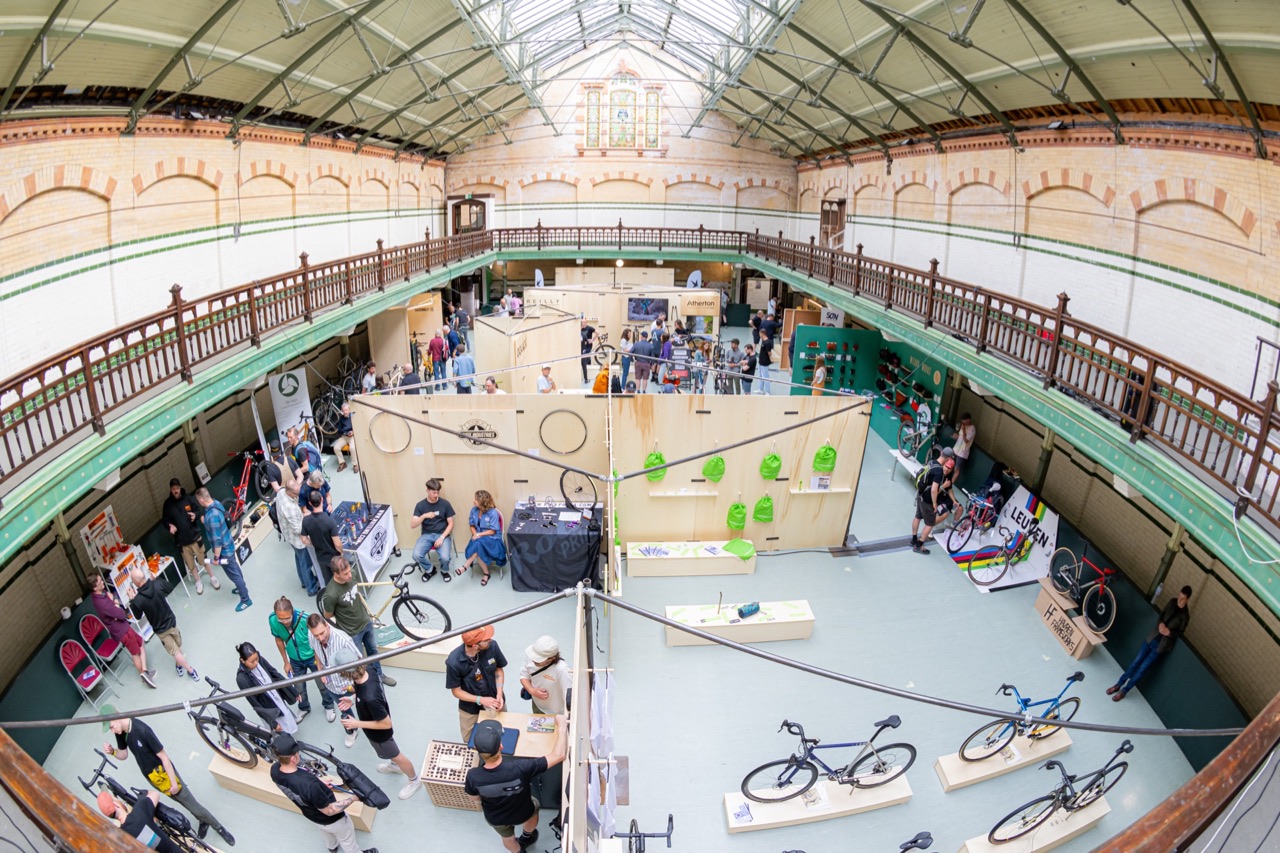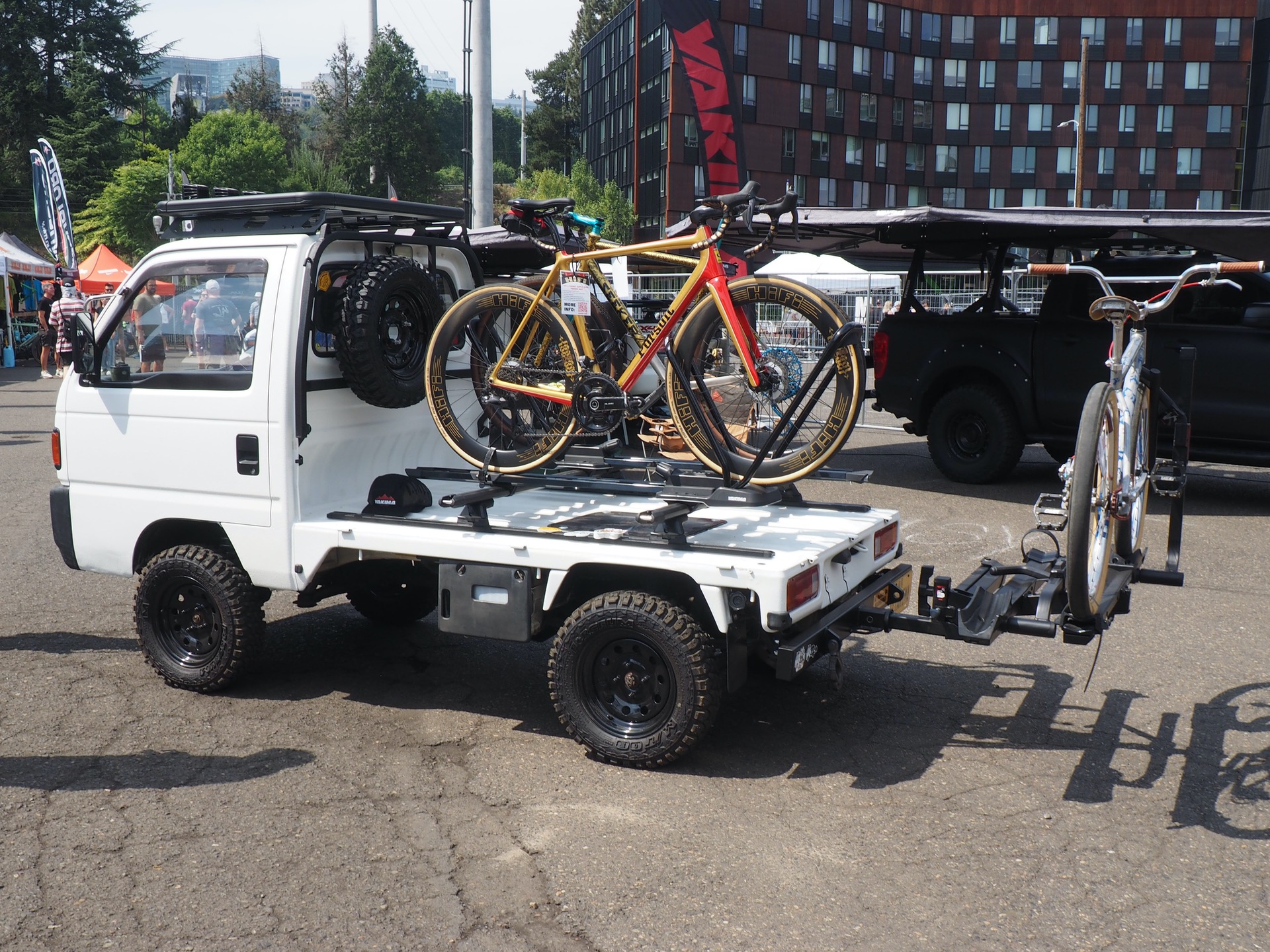Killerdrop System Features at Sea Otter
The Killerdrop is a one-click seat height/angle adjustment system that is the best answer we've seen yet to a question mountain bikers the world over have been asking for decades. It will be available for test rides near the finish of the dual slalom course during the 2025 Sea Otter Classic.

The Killerdrop seat height and angle adjuster first caught the eye of HBG when reporter Matt Butterman spotted it at its unveiling in the Master Bike Builders Show in Bentonville, Arkansas, in August 2024.
The brainchild of mechanical design engineer, Chris Killer, who happens to be an avid mountain biker, this system is a way to simultaneously adjust seat height, effective seat tube angle, and saddle pitch on the fly using just the dropper post lever.
It’s actuated by a regular dropper post mounted on a stanchion that includes a custom-made seat tube collar brazed onto a pivoting horizontal bar. A stabilizing tension bar runs from the seat to a pivot point near the head tube, and attaches at the seat clamp with a flexible metal plate.
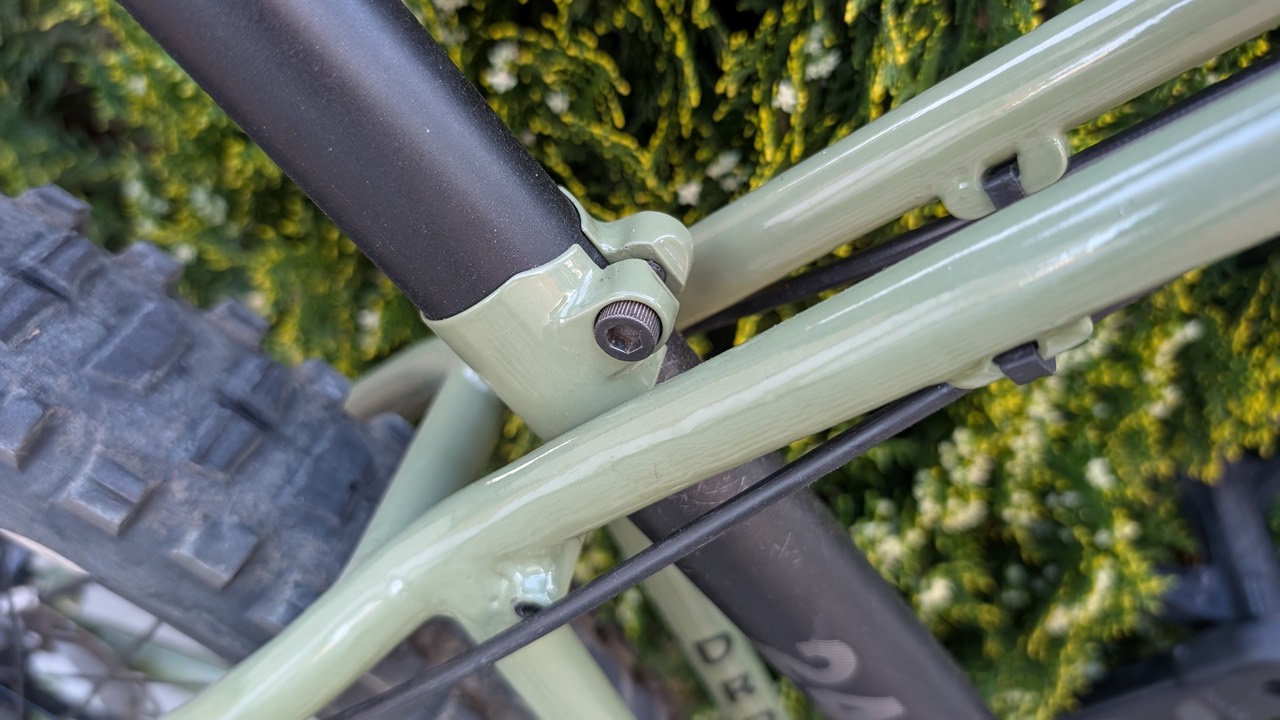 Chris machined a piece of 1.250" 4130 steel tubing to get the collar he needed. The binder is standard.
Chris machined a piece of 1.250" 4130 steel tubing to get the collar he needed. The binder is standard.
On a level grade, in the down position the seat nose tilts slightly up, which is how you want it on steep descents, and in the up position the nose tilts slightly down, which helps maximize your pedal push on steep climbs.
Out on a ride, using a dropper post lever on the handlebars, you can adjust the seat’s height and angle to keep it closer to level rather than parallel to the gradient. This is consistent with the body centers we adopt on uphills and downhills.
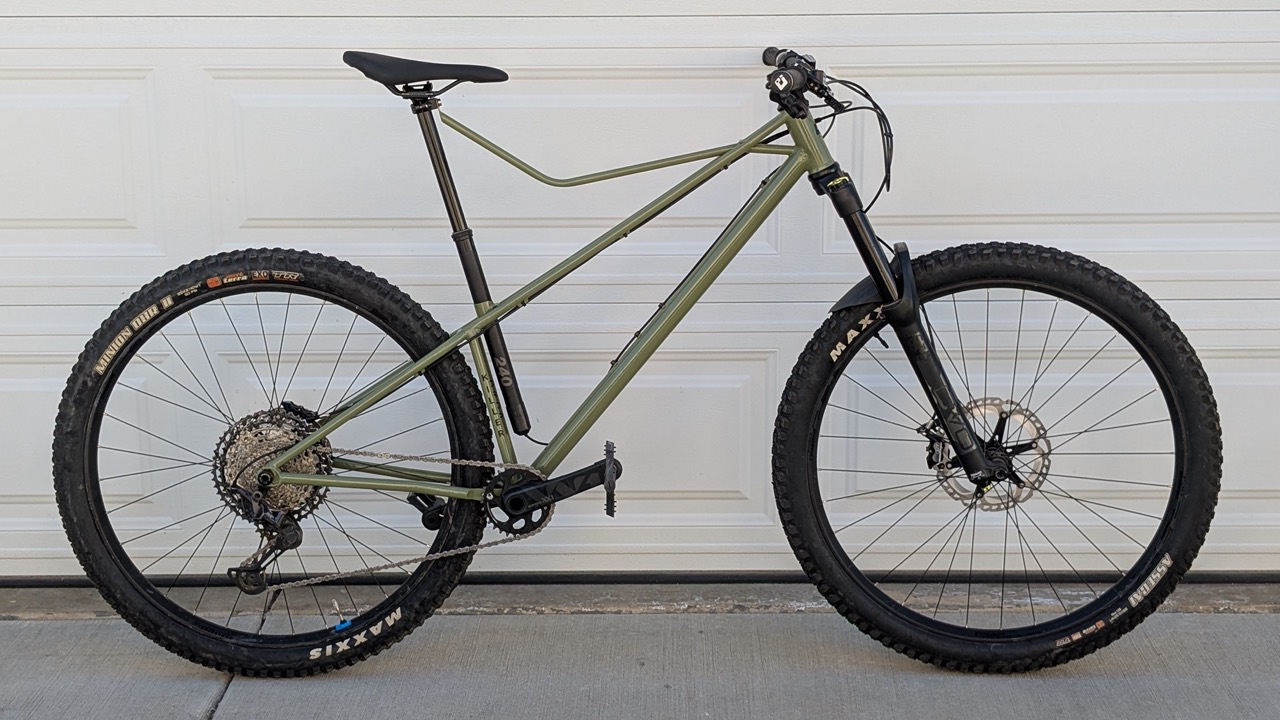 The Up position takes the edge off steep climb
The Up position takes the edge off steep climb
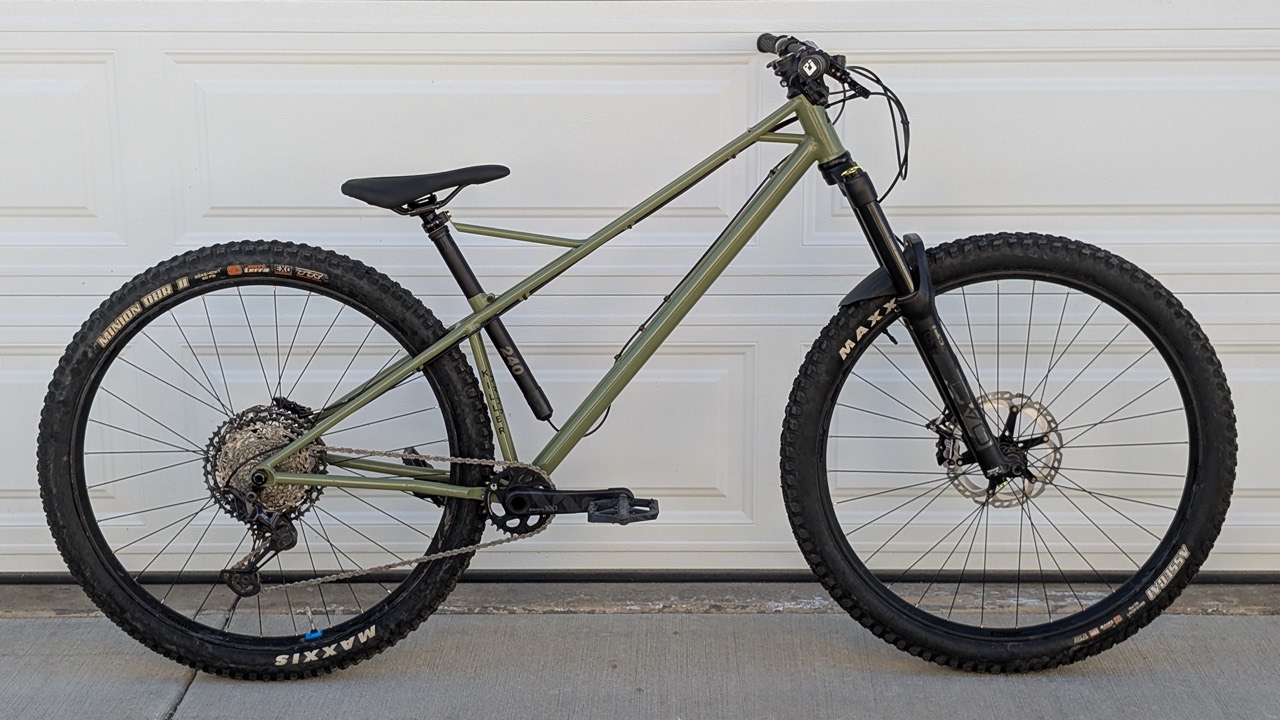 The Down position. A big advantage of this Down position over a conventional frame and dropper post is that the rear edges of the seat don't hit on the inner thighs so much. Stating what may be obvious: A rider can easily select a seat height/pitch anywhere between Up and Down
The Down position. A big advantage of this Down position over a conventional frame and dropper post is that the rear edges of the seat don't hit on the inner thighs so much. Stating what may be obvious: A rider can easily select a seat height/pitch anywhere between Up and Down
Of course there are seat angle adjusters on the market for use with dropper posts, and Chris himself owns the Aenomaly Switchgrade. He sees this as an excellent step in the right direction, and sees his solution as the next step up. The ability to easily make precise adjustments on the fly without taking a hand from the bars is just one of the improvements over his Switchgrade experience.
Whereas existing dropper posts and related systems solve the problem of seat height, they negatively affect your center of gravity when seated in the down position—as a rider may at times be on a long descent—as well as decreasing pedaling efficiency when all the way up. The Killer Drop system does the opposite, and while it may not be a perfect solution to these issues it is the most effective approach we’ve seen. We’d most like to see it on a full-suspension system.
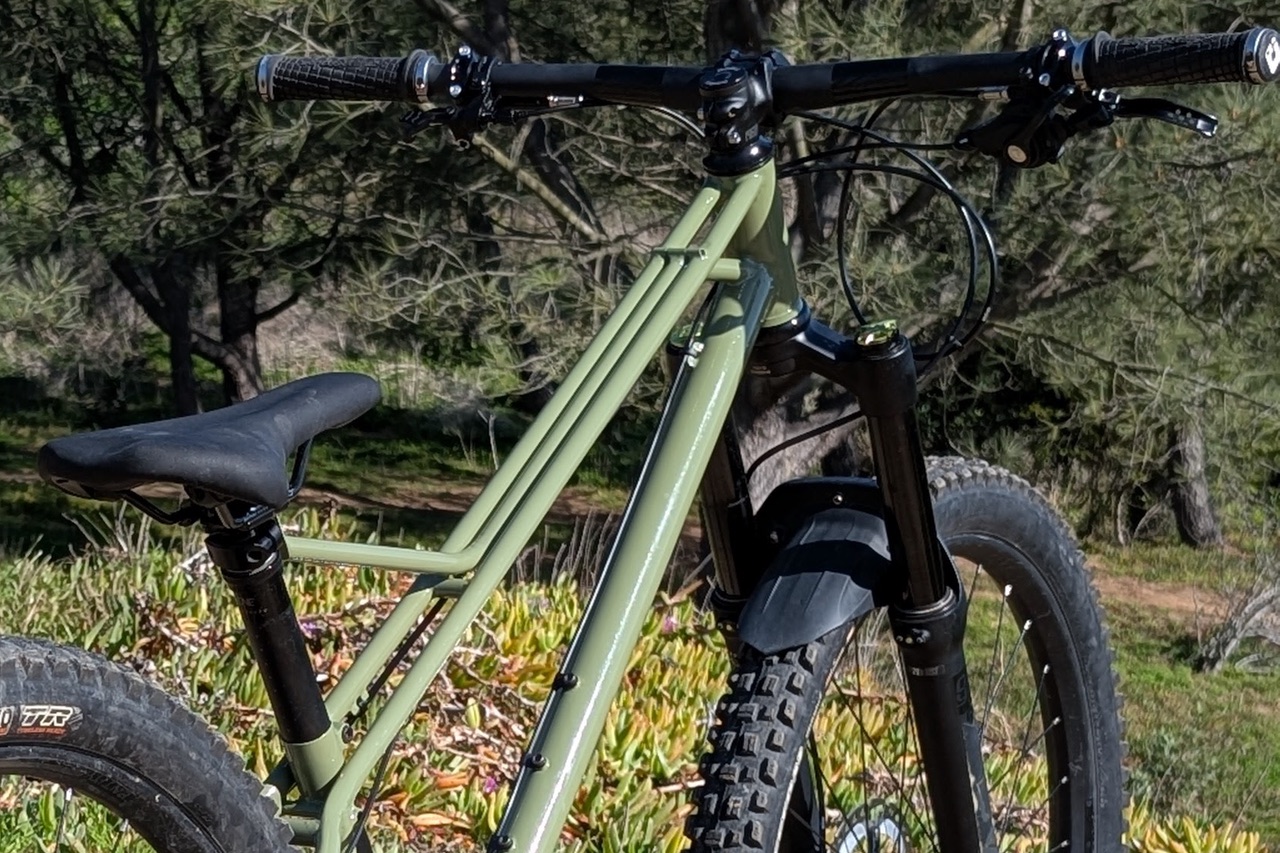 The torsion bar runs from 10mm behind the head tube to the front of the seat clamp. Different lengths are available, and the bend can be cold set
The torsion bar runs from 10mm behind the head tube to the front of the seat clamp. Different lengths are available, and the bend can be cold set
Chris Killer is not the only hard-core mountain biker with the chops to actually do something frame-based about a design challenge that’s been present in the bicycle world since the year dot.
Coincidentally, last year at the Made show, we saw something interesting from another outer-box thinker and hard-core mountain biker: frame builder Tyler Reiswig of Chico-based Bitch’n bikes. He showed a variable-length top tube MTB frame. This is a similar idea to the Killerdrop, only with different mechanics.
Chris Killer lives near Laguna Beach in California, a long-established mountain biking hub known for steep gradients in the coastal hills south of Los Angeles. Chico, 500 miles away in north central California, is at the foothills of the Sierra Nevada mountain range, and like Laguna Beach it has a lot of steep trails. Several years ago a German company, Bionicon, which is based amid low-but-steep hills near the German-Czech border, once made MTBs with variable geometry for similar reasons. Bionicon's system cleverly moved air between the front and rear suspension. Chris has owned four Bionicon bikes over the years, and if they were still offering this design he speculates that he might not have come up with the Killerdrop idea at all. The point is: All of these inventions have come about to meet the needs of experienced mountain bikers looking for technology that’s better suited to the terrain they cover on their regular rides.
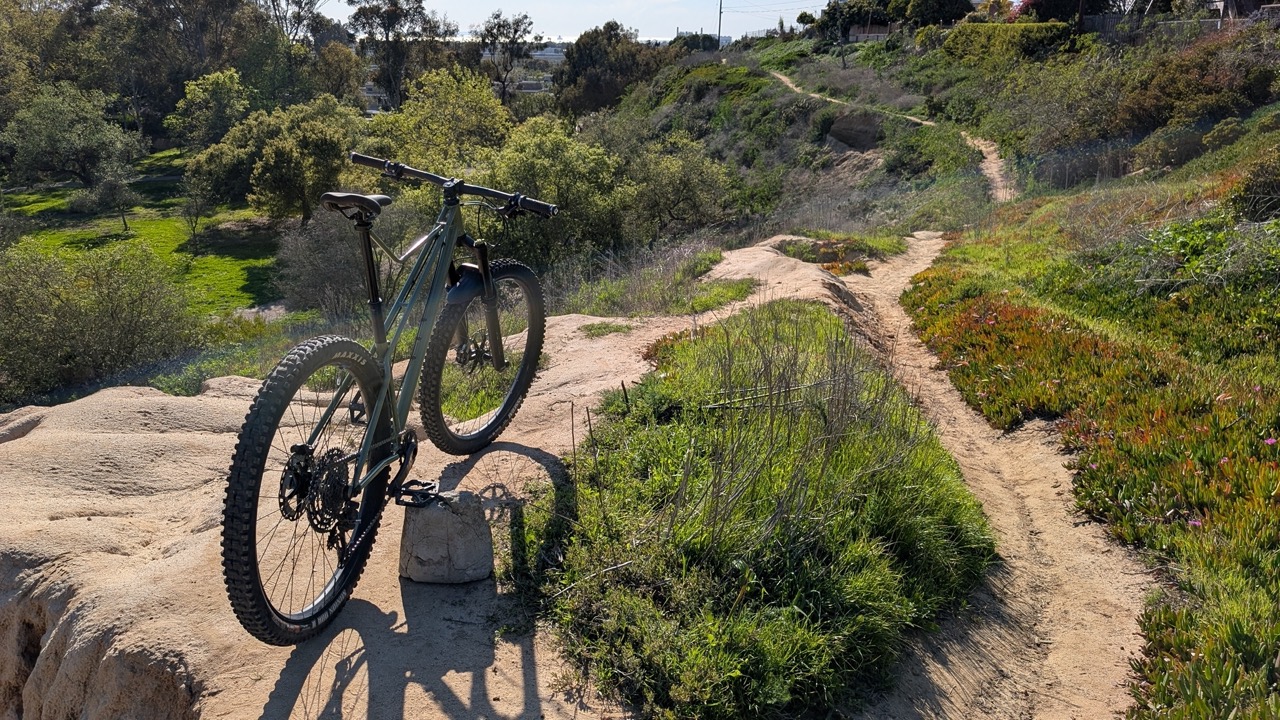
The ride
We’re not the only ones who would like to see a full-suspension version of this. The extra control offered by the Killerdrop allows slightly faster descending, and with the improved descending control a rider might choose to remain seated more especially on long 20+ minute descents such as you'd find in places like Mount Shasta. These factors, combined with a hardtail, can amount to quite a beating that a nice rear shock would adequately prevent. The tension bar acts as a spring to a tiny extent, but this is something you might notice on a gravel surface, and not so much a punishing descent.
Chris has made a few iterations of the tension bar to stop it from clattering on the top tubes. Overall he says he’s not aware of frame flex, even riding bumpy descents on hard ground.
On climbs he rides with the seat in its highest position, then drops it about 10mm for regular xc trails. This reduces pressure on the wrists, but still gives a good hip joint angle for pedaling.
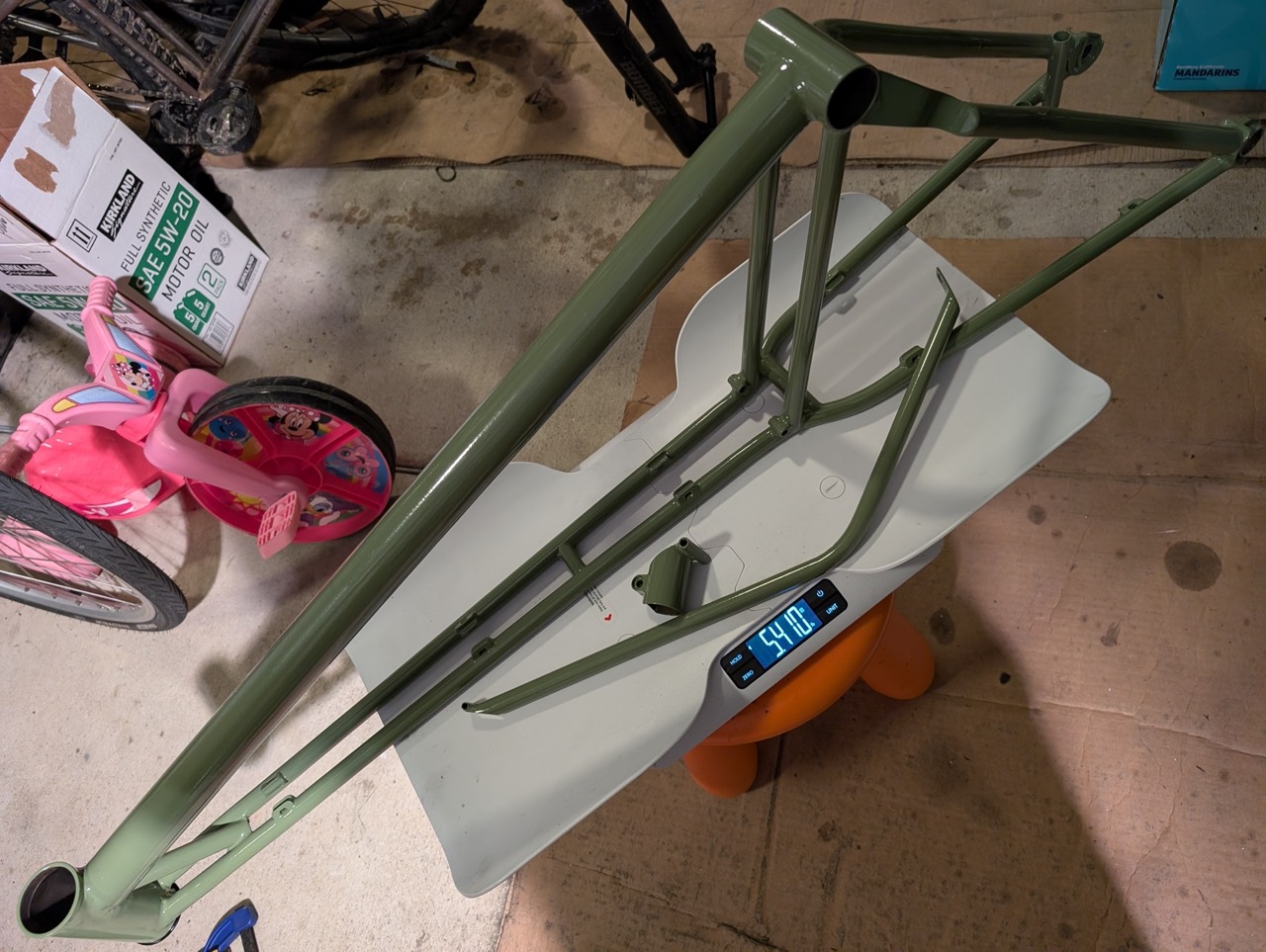 5.4lb/2.45kg for a 4130 steel frameset is pretty light
5.4lb/2.45kg for a 4130 steel frameset is pretty light
Frame tech
Chris happened to be in China during the Covid lock-down there. He was confined for three weeks to his hotel room with just a laptop loaded with Solidworks. What better time to work on the design of an idea that had been on his mind for quite a while. With that out of the way, it was time to scratch another long-term itch: frame building. Making a bike frame had been on his mind for some years, and now he had the perfect excuse to learn the basics and get one built.
His Sea Otter ‘25 bike is only the second frame he has built. It is all 4130 steel, except the downtube which is Columbus Zona. Frame weight did not feature in his design planning, but he was pleased to see it came out at 5.4lb/2.45kg with paint. As such it’s not superlight, but definitely a lightweight among steel MTB frames for the general rider.
Since MBBS ‘24, Chris has refined the Killerdrop system. He’s moved the tension bar pivot 100mm farther back from the head tube to bring the saddle more forward in the higher seat positions.
The tension bar is swappable. This means using either longer or shorter lengths as needed for the terrain or rider preference.
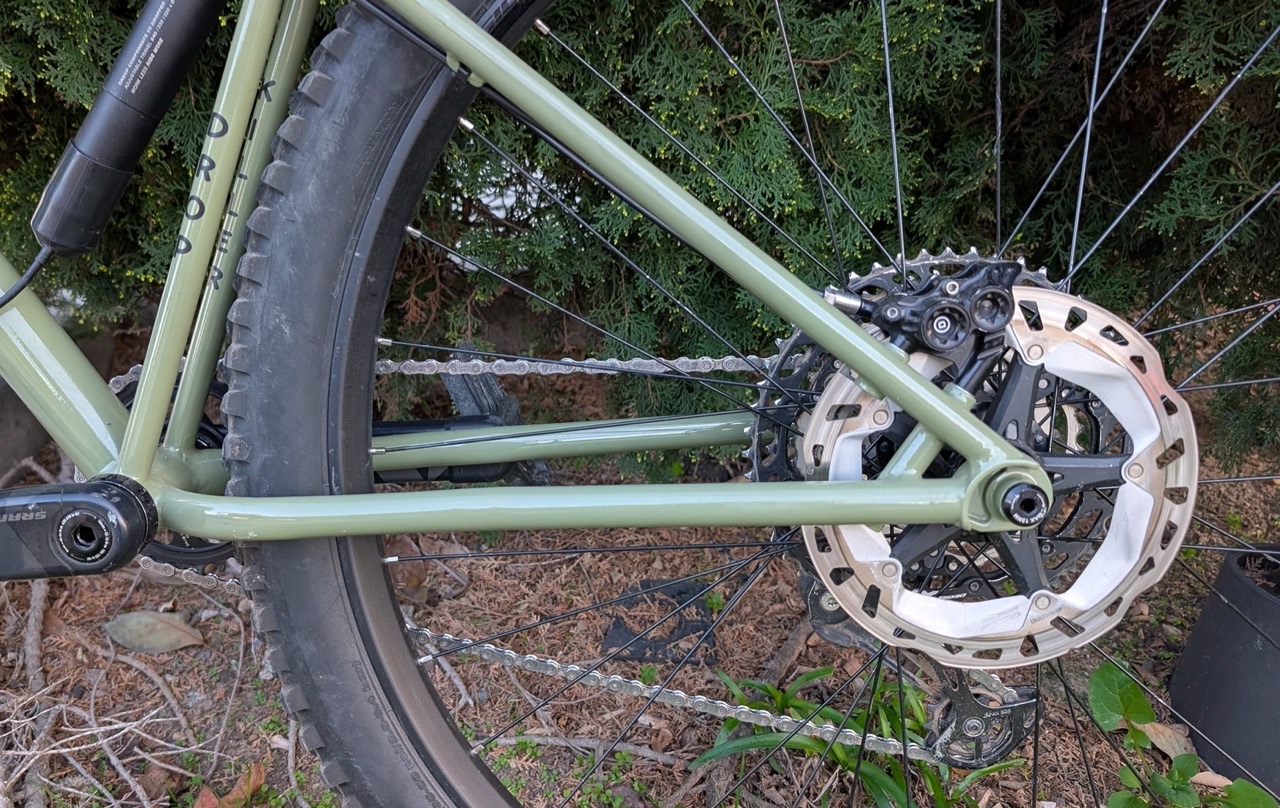 The brake mount and chainstay yoke are among several of Chris's own designs on a frame that we're sure Eric Noren would describe as "deep custom"
The brake mount and chainstay yoke are among several of Chris's own designs on a frame that we're sure Eric Noren would describe as "deep custom"
For the pivots he’s used roll pins, which provide a high shear strength and tight fit without the need for close manufacturing tolerances. The earlier version at MBBS last year used a clevis pin at the front and a bolt with axle and bushings at the rear. He decided this was unnecessarily complex.
Where the tension bar meets the seat clamp, he’s used thin sheet metal and belleville washers to allow the small changes in angle needed at that junction.
The Killer Drop system will be on display and available for demo rides at the 2025 Sea Otter Classic, near the finish of the dual slalom. To arrange a ride, contact Chris Killer chriskillerdesigns@gmail.com
